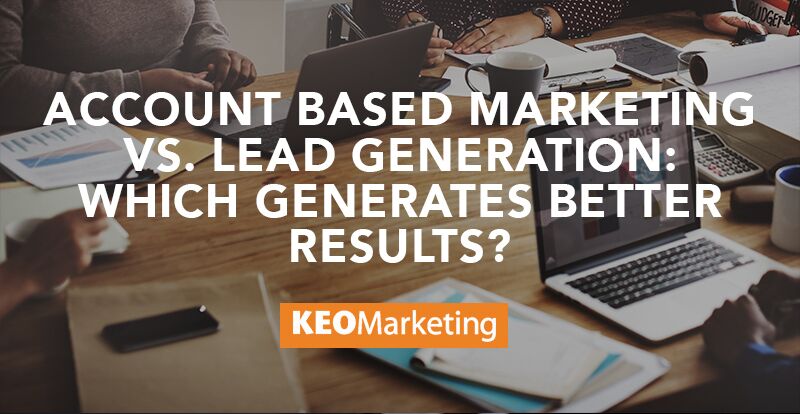 What exactly is account based marketing (ABM) and how does it stack up to traditional lead generation efforts?
What exactly is account based marketing (ABM) and how does it stack up to traditional lead generation efforts?
ITSMA, the Information Technology Services Marketing Association, introduced ABM in 2003 as an innovative and strategic way to target high-value accounts. ABM requires tight alignment between your sales and marketing teams to identify specific opportunities, develop personalized messaging, coordinate sales activities, and measure progress.
When both teams work toward the same goals, they create a more united and transparent relationship. Aligning sales and marketing also streamlines the typically complex and lengthy B2B sales cycle.
ABM Adoption Takes Off
During 2016, ABM became one of the biggest buzzwords in business-to-business (B2B) marketing. The concept gained traction, and B2B marketers began to invest more heavily in ABM. According to SiriusDecisions’ 2016 State of Account Based Marketing Study, 27% of survey participants allocated between 11% and 30% of their total marketing budget to ABM, up from 19% in 2015.
In the same study, over 70% of respondents said they spent more of their budgets on ABM in 2016. Researchers expect this upward trend in spending to continue in 2017.
Why the growing adoption of ABM? In one word: results. Demandbase, an ABM technology provider, found deal size increased by 26% and close rate grew by an impressive 75%. In a recent ITSMA survey, 84% of marketers said ABM generated a higher ROI compared to other marketing programs.
How ABM Differs from Traditional Lead Gen
Traditional lead generation tools revolve around people. Marketing teams create lists of prospects and launch campaigns to engage them. Conversely, salespeople think of lead generation as an account-centric process. ABM brings both groups together to use the account-centric sales approach.
Also, ABM focuses more on outbound instead of inbound strategies. Traditional lead generation involves casting a big net with your campaigns and pulling in as many prospects as possible. However, this approach can result in catching a bunch of unqualified leads. To secure the right targets, ABM defines a much narrower market and reaches out to them with outbound tactics.
Finally, traditional lead generation focuses almost exclusively on generating new leads, and the more, the better. ABM takes a different approach. In addition to targeting new high-value accounts, it also concentrates on retaining your existing customer base through cross-selling and up-selling.
When ABM Makes Sense
Traditional lead generation works well when targeting smaller businesses and lower value sales. You can populate a large percentage of your sale pipeline leveraging content, inbound marketing tactics, and marketing automation.
For higher value accounts, traditional lead generation often fails to deliver the expected results. Selling to large enterprises or cross-selling to your current customer base requires a more structured and strategic approach. ABM, along with outbound tactics, helps you catch the bigger fish.
Adopting a Successful ABM Approach
According to SiriusDecisions, 92% of B2B companies recognize the value in ABM. Only 20% of B2B marketing organizations have implemented it. This gap results from companies not knowing how to implement an ABM program.
ABM goes well beyond asking sales to provide a list of target accounts. It requires significant effort to coordinate the sales and marketing teams. However, when done correctly, ABM can dramatically boost your return on investment.
To achieve your goals, make sure your ABM program:
- Aligns your sales and marketing teams to attract, engage, convert, and measure progress.
- Focuses on the most valuable prospects. Leveraging data and predictive analytics can help you determine the best accounts to target.
- Evaluates current customers for expanding sales opportunities.
- Produces a concise list of target accounts defined by both sales and marketing.
- Develops insights into each account and generates the best contacts within those specific accounts. You must understand each buyer’s unique journey so you can deliver the right experience to the right contact at the right time.
- Creates personalized messages to each account and contact through outbound interactions and campaigns.
ABM has the potential to grow your revenue and increase profits. As ITSMA’s research found, ABM can deliver the highest ROI of any B2B marketing program. With successful alignment of your sales and marketing teams, you can direct a concerted effort that optimizes your valuable resources and takes your marketing programs to new levels.
About KEO Marketing
KEO Marketing Inc., a leading marketing agency based in Phoenix, Arizona, develops and implements strategies to help clients significantly increase leads and sales.
For more information and to request a complimentary consultation, contact us today.

 463 views
463 views